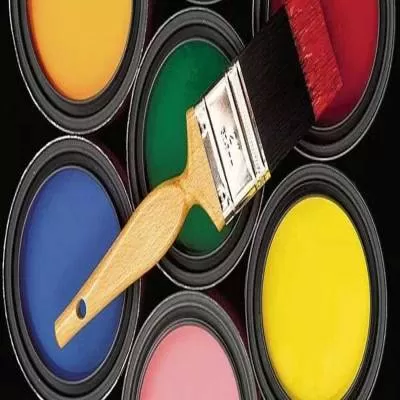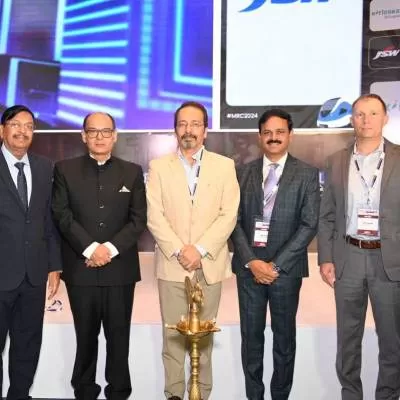- Home
- Building Material
- Paint
- Lubricating systems
Lubricating systems
Centralised grease lubrication systems are widely used in industrial and heavy-duty mobile equipment applications to lubricate multiple points on a machine. These systems range from a simple single-port lubricator to complex dual-line, reversing units employing timers and alarms to deliver grease reliably to hundreds of grease points. When used and maintained properly, these systems can help enhance technician productivity and simplify equipment maintenance processes.
Why centralised grease systems?
These systems are primarily designed to ensure a safe work environment for maintenance personnel by simplifying the process of accessing remote grease points, especially when the equipment is in operation. However, the primary benefit is derived from the continuous application of small amounts of grease resulting in improved equipment life.
Categorical distinction
These systems are designed to lubricate the broadest range of stationary and mobile equipment. Most centralised grease systems fall into two categories. The first is a direct system in which a pump is used to pressurise the grease and meter it out to the application point. The second is an indirect system, in which a pump pressurises the grease, then valves built into the distribution line are utilised to meter the grease. Indirect systems are broken down into two basic types, parallel and non-parallel which can be further broken down into single and dual line systems. Today, the most common type of centralised grease system is the indirect single-line system, accounting for more than 50 per cent of the market.
Selection Criteria
The bearings or other grease points that needs to be lubricated determine the base oil type and viscosity of the grease to be used in the system. Factors that play a role in this decision include speed, load characteristics, ambient and operating temperatures, and other environmental concerns. If the grease is applied by means of the system, the National Lubricating Grease Institute grade and other physical properties must also be considered to achieve trouble-free delivery of grease to the lubrication point. Greases that function best in centralised grease systems are typically ones that demonstrate the following properties:
- NLGI 1 Grade or softer
- Good shear and mechanical stability (ASTM D217, ASTM D1831)
- Good resistance to separation of oil and soap (ASTM D4425)
- Good pumpability and flow properties (Lincoln Ventmeter; USS Mobility, ASTM D1092) Good seal and elastomer compatibility (ASTM D4289)
Evaluating the flow properties of grease is also essential when the application engineer designs the system. Pressure from the pump moves grease through the lines and is needed to activate the metering blocks, valves and injectors precisely and at the right time. The grease must be able to relieve this pressure in time for the next lubrication cycle in order to reload the injector.
System Design
A complex number of decisions and calculations should be made before identifying the final system type and setup. The size of the system, frequency of lubrication, and cost should be considered which as it determines the decision to install either a manual or automatic system. In case an automatic system is chosen, it will require a pneumatic, hydraulic, mechanical, or electrical power source. Grease volumes required at each lube point will need to be determined via various calculations, which can be provided by your lubricant supplier or centralised grease system manufacturer. The location of bearings, bearing size, and line size also plays an important role. Further, the lube volume and type, pressure capacity, and cost should all be considered for pump selection. The control system that will run the system should be identified, variations include visual, machine PLC, timer, and count monitor. Finally, a low-level monitor should be considered for the reservoir.
System Installation
While all operating aspects of the system must be thoroughly verified against the manufacturer's instructions, it is essential to pre-lubricate all application points to ensure a sufficient supply of grease at start-up. Before connecting feeder lines to the lubrication point, the pump should be operated until grease appears at the end of all lines, unless prefilled lines are used. Sufficient grease should be expelled to clean the lines of any debris that could cause wear problems on the bearing surface in the future. Grease should be at room temperature before being charged into the system. Purging the system of air is essential to the operation of metering blocks and injectors. These systems require a strict regimen of maintenance procedures. The guidelines ensure that the system operates at peak performance, thus simplifying equipment maintenance procedures and saving time and money.
(Communication by the management of the company)
"Our ultimate goal is to improve our customers' competitiveness by facilitating improved productivity". - Paul Grives, Global Industrial Strategy Advisor, ExxonMobil Lubricants
Mobil-branded greases are expertly formulated to deliver a number of key operational and financial benefits. Paul Grives, Global Industrial Strat¡¡egy Advisor, ExxonMobil Lubricants analyses the challenges and requirements of the lubrication and grease industry.
How does ExxonMobil develop the right lubricants as per customers' needs and requirements?
Our ultimate goal is to improve our customers' competitiveness by facilitating improved productivity with the highest level of application expertise. We place enormous emphasis on ongoing investment in R&D, while working with OEMs to develop the most effective products and maintenance solutions.
What are the diverse lubrication challenges faced by OEMs while transporting manufacturing equipment?
One of the identified challenges include the maintenance of lubrication from design to delivery. In order to offer the efficient results for equipments, the lubrication standards must be maintained across the entire supply chain - from design, to production, during transportation and all the way through installation.
When should companies use grease as against lubricating oils?
There are many applications where greases are recommended over lubricating oil. Typically, greases are used instead of fluids, where a lubricant is required to maintain its original position in a mechanism, especially where opportunities for frequent relubrication may be limited. This requirement may be due to the physical configuration of the mechanism, type of motion, type of sealing or the need for the lubricant to perform all or part of any sealing function in the prevention of lubricant loss or entrance of contaminants. Because of their solid nature, greases do not perform the cooling and cleaning function associated with the use of a fluid lubricant. With these exceptions, greases are expected to perform all other functions of a fluid lubricant.
How do your greases differ from those of your competitors?
Our Mobil-branded greases are specially designed to meet a wide variety of operating conditions in the industry. These conditions include very high and low temperatures, water contamination, heavy or shock loads, and variable speeds. Mobil-branded greases are expertly formulated to deliver a number of key operational and financial benefits. These include enhanced equipment reliability and performance, reduced waste - by delivering long grease life and extending re-lubrication intervals, improved productivity, consistent quality and increased convenience.
"We have an excellent portfolio of high-performance lubricants that can cater to the needs of many industrial market sectors." - Rupinder Paintal, General Manager, Industrial, ExxonMobil Lubricants
ExxonMobil is an oil company with upstream, downstream and chemical businesses. It also involves a research and engineering company which works on technological innovation. Rupinder Paintal, General Manager, Industrial, ExxonMobil Lubricants, dilates on the various products offered by the company and the need for an energy efficient logo.
Please give us a brief introduction on ExxonMobil
Our upstream business is focussed on exploration, development and production work for crude oil, natural gas and other energy products. The downstream business focusses on refining and distributing products derived from crude oil and other feedstocks. The fuel marketing section includes our global network of manufacturing plants, transportation systems, and distribution centres. This section also includes our Lubricants & Specialties business, which is further divided as base stock and speciality group which majorly produces base oils while the group makes asphalts, speciality products, etc. On the lubricant side, we have the industrial oil group which includes Mobil Industrial lubricants; passenger vehicle lubricant group; commercial vehicle lubricant group; aviation lubricant group and marine lubricant group.
What is ExxonMobil's pipeline of products for the Indian market, especially for the oil and gas market?
The Mobil Industrial Lubricants' product portfolio in India is well positioned to support the economic and industrial growth taking place in the country. We have an excellent balanced portfolio of state-of-the-art, high-performance lubricants that can cater to the needs of many industrial market sectors, all backed by ExxonMobil's unmatched industry expertise.
For the oil and gas sector, we offer Mobil SHC 600 - the parent product with number of other products under it, Mobil SHC Gear - synthetic high performance gear oil, Mobil SHC 500 Series - synthetic hydraulic fluid, Mobil DT 10 Excel - premium hydraulic fluid, Mobil SHC Rarus 800 - synthetic compressor fluid. Other than these, the top three greases are Mobil SHC PM, Mobil Greases, Mobilith SHC. All these products are available in any sector of India.
Elaborate on the 'Energy Efficiency' logo introduced by the company?
In the absence of any international standard for evaluating or denoting energy efficiency for lubricants, ExxonMobil introduced the 'Energy Efficiency' logo for its products. The logo represents a visible statement that users can easily recognise and be confident that they are purchasing and using potentially energy saving industrial oils and grease technology. It will help our customers select the right Mobil industrial lubricants to improve energy efficiency and reduce energy costs.
SHANKAR KARNIK, Asia Pacific Mobil SHC Brand Manager at ExxonMobil Lubricants, explains how centralised grease lubrication systems, used in wide equipment applications, can be efficiently maintained in detail. Centralised grease lubrication systems are widely used in industrial and heavy-duty mobile equipment applications to lubricate multiple points on a machine. These systems range from a simple single-port lubricator to complex dual-line, reversing units employing timers and alarms to deliver grease reliably to hundreds of grease points. When used and maintained properly, these systems can help enhance technician productivity and simplify equipment maintenance processes. Why centralised grease systems? These systems are primarily designed to ensure a safe work environment for maintenance personnel by simplifying the process of accessing remote grease points, especially when the equipment is in operation. However, the primary benefit is derived from the continuous application of small amounts of grease resulting in improved equipment life. Categorical distinction These systems are designed to lubricate the broadest range of stationary and mobile equipment. Most centralised grease systems fall into two categories. The first is a direct system in which a pump is used to pressurise the grease and meter it out to the application point. The second is an indirect system, in which a pump pressurises the grease, then valves built into the distribution line are utilised to meter the grease. Indirect systems are broken down into two basic types, parallel and non-parallel which can be further broken down into single and dual line systems. Today, the most common type of centralised grease system is the indirect single-line system, accounting for more than 50 per cent of the market. Selection Criteria The bearings or other grease points that needs to be lubricated determine the base oil type and viscosity of the grease to be used in the system. Factors that play a role in this decision include speed, load characteristics, ambient and operating temperatures, and other environmental concerns. If the grease is applied by means of the system, the National Lubricating Grease Institute grade and other physical properties must also be considered to achieve trouble-free delivery of grease to the lubrication point. Greases that function best in centralised grease systems are typically ones that demonstrate the following properties: NLGI 1 Grade or softer Good shear and mechanical stability (ASTM D217, ASTM D1831) Good resistance to separation of oil and soap (ASTM D4425) Good pumpability and flow properties (Lincoln Ventmeter; USS Mobility, ASTM D1092) Good seal and elastomer compatibility (ASTM D4289) Evaluating the flow properties of grease is also essential when the application engineer designs the system. Pressure from the pump moves grease through the lines and is needed to activate the metering blocks, valves and injectors precisely and at the right time. The grease must be able to relieve this pressure in time for the next lubrication cycle in order to reload the injector. System Design A complex number of decisions and calculations should be made before identifying the final system type and setup. The size of the system, frequency of lubrication, and cost should be considered which as it determines the decision to install either a manual or automatic system. In case an automatic system is chosen, it will require a pneumatic, hydraulic, mechanical, or electrical power source. Grease volumes required at each lube point will need to be determined via various calculations, which can be provided by your lubricant supplier or centralised grease system manufacturer. The location of bearings, bearing size, and line size also plays an important role. Further, the lube volume and type, pressure capacity, and cost should all be considered for pump selection. The control system that will run the system should be identified, variations include visual, machine PLC, timer, and count monitor. Finally, a low-level monitor should be considered for the reservoir. System Installation While all operating aspects of the system must be thoroughly verified against the manufacturer's instructions, it is essential to pre-lubricate all application points to ensure a sufficient supply of grease at start-up. Before connecting feeder lines to the lubrication point, the pump should be operated until grease appears at the end of all lines, unless prefilled lines are used. Sufficient grease should be expelled to clean the lines of any debris that could cause wear problems on the bearing surface in the future. Grease should be at room temperature before being charged into the system. Purging the system of air is essential to the operation of metering blocks and injectors. These systems require a strict regimen of maintenance procedures. The guidelines ensure that the system operates at peak performance, thus simplifying equipment maintenance procedures and saving time and money. (Communication by the management of the company) "Our ultimate goal is to improve our customers' competitiveness by facilitating improved productivity". - Paul Grives, Global Industrial Strategy Advisor, ExxonMobil Lubricants Mobil-branded greases are expertly formulated to deliver a number of key operational and financial benefits. Paul Grives, Global Industrial Strat¡¡egy Advisor, ExxonMobil Lubricants analyses the challenges and requirements of the lubrication and grease industry. How does ExxonMobil develop the right lubricants as per customers' needs and requirements? Our ultimate goal is to improve our customers' competitiveness by facilitating improved productivity with the highest level of application expertise. We place enormous emphasis on ongoing investment in R&D, while working with OEMs to develop the most effective products and maintenance solutions. What are the diverse lubrication challenges faced by OEMs while transporting manufacturing equipment? One of the identified challenges include the maintenance of lubrication from design to delivery. In order to offer the efficient results for equipments, the lubrication standards must be maintained across the entire supply chain - from design, to production, during transportation and all the way through installation. When should companies use grease as against lubricating oils? There are many applications where greases are recommended over lubricating oil. Typically, greases are used instead of fluids, where a lubricant is required to maintain its original position in a mechanism, especially where opportunities for frequent relubrication may be limited. This requirement may be due to the physical configuration of the mechanism, type of motion, type of sealing or the need for the lubricant to perform all or part of any sealing function in the prevention of lubricant loss or entrance of contaminants. Because of their solid nature, greases do not perform the cooling and cleaning function associated with the use of a fluid lubricant. With these exceptions, greases are expected to perform all other functions of a fluid lubricant. How do your greases differ from those of your competitors? Our Mobil-branded greases are specially designed to meet a wide variety of operating conditions in the industry. These conditions include very high and low temperatures, water contamination, heavy or shock loads, and variable speeds. Mobil-branded greases are expertly formulated to deliver a number of key operational and financial benefits. These include enhanced equipment reliability and performance, reduced waste - by delivering long grease life and extending re-lubrication intervals, improved productivity, consistent quality and increased convenience. "We have an excellent portfolio of high-performance lubricants that can cater to the needs of many industrial market sectors." - Rupinder Paintal, General Manager, Industrial, ExxonMobil Lubricants ExxonMobil is an oil company with upstream, downstream and chemical businesses. It also involves a research and engineering company which works on technological innovation. Rupinder Paintal, General Manager, Industrial, ExxonMobil Lubricants, dilates on the various products offered by the company and the need for an energy efficient logo. Please give us a brief introduction on ExxonMobil Our upstream business is focussed on exploration, development and production work for crude oil, natural gas and other energy products. The downstream business focusses on refining and distributing products derived from crude oil and other feedstocks. The fuel marketing section includes our global network of manufacturing plants, transportation systems, and distribution centres. This section also includes our Lubricants & Specialties business, which is further divided as base stock and speciality group which majorly produces base oils while the group makes asphalts, speciality products, etc. On the lubricant side, we have the industrial oil group which includes Mobil Industrial lubricants; passenger vehicle lubricant group; commercial vehicle lubricant group; aviation lubricant group and marine lubricant group. What is ExxonMobil's pipeline of products for the Indian market, especially for the oil and gas market? The Mobil Industrial Lubricants' product portfolio in India is well positioned to support the economic and industrial growth taking place in the country. We have an excellent balanced portfolio of state-of-the-art, high-performance lubricants that can cater to the needs of many industrial market sectors, all backed by ExxonMobil's unmatched industry expertise. For the oil and gas sector, we offer Mobil SHC 600 - the parent product with number of other products under it, Mobil SHC Gear - synthetic high performance gear oil, Mobil SHC 500 Series - synthetic hydraulic fluid, Mobil DT 10 Excel - premium hydraulic fluid, Mobil SHC Rarus 800 - synthetic compressor fluid. Other than these, the top three greases are Mobil SHC PM, Mobil Greases, Mobilith SHC. All these products are available in any sector of India. Elaborate on the 'Energy Efficiency' logo introduced by the company? In the absence of any international standard for evaluating or denoting energy efficiency for lubricants, ExxonMobil introduced the 'Energy Efficiency' logo for its products. The logo represents a visible statement that users can easily recognise and be confident that they are purchasing and using potentially energy saving industrial oils and grease technology. It will help our customers select the right Mobil industrial lubricants to improve energy efficiency and reduce energy costs.
























